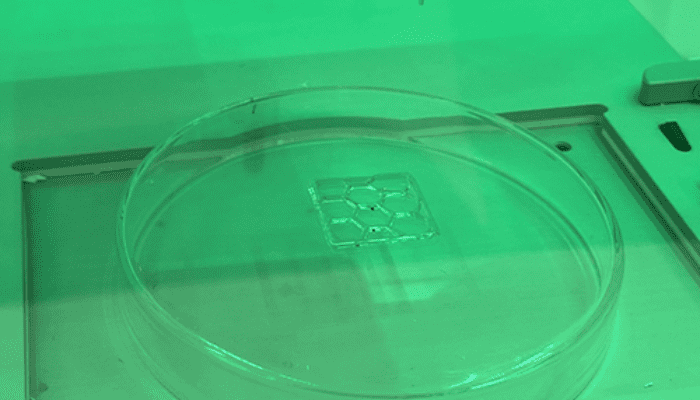3D Printed Patches Used for Revolutionary, Targeted Cancer Treatment

According to the World Health Organization, estimates for the year 2022 reveal an alarming increase in cancer cases, with 20 million new cases and 9.7 million deaths recorded, double the figures for the year 2020. Indeed, in the US, cancer is the 2nd leading cause of death, surpassed only by heart disease. However, despite constant advances in treatment research, the quest for a cure remains a major challenge. However, a study conducted by the University of South Australia offers new hope in the fight against cancer, particularly liver cancer, thanks to the use of 3D printing.
Recent research suggests that 3D-printed patches containing drugs could be a major advance in the treatment of liver cancer. Not only do they appear to kill over 80% of cancer cells, but they also reduce the risk of relapse and limit the side effects of traditional chemotherapy. This new approach could transform the way we treat this disease.

The 3D-printed patch (photo credits: University of South Australia)
3D-Printed Patches: A Revolution in Cancer Treatment
The new 3D-printed patches, made from gels containing anti-cancer drugs (chemotherapy), are an innovative solution. They are placed precisely where the cancer has been surgically removed, targeting residual cancer cells. These patches could also reduce the side effects of conventional chemotherapy, such as nausea. Although first developed to treat liver cancer, they could also be useful against other cancers, including those of the ovaries, brain and neck. The research team prioritized the study of liver cancer because of its aggressive nature and high mortality, with relapse risks of up to 70%.
According to Dr Souha Youssef, a researcher at the University of South Australia, the new patches represent a major advance in the treatment of this potentially fatal disease. “The main treatment protocol requires the surgical removal of the tumor followed by chemotherapy, which while crucial to prevent relapse, is very challenging due to its debilitating side effects. There are striking statistics that show how many patients choose to discontinue treatment due to its aggressiveness and how it is affecting their quality of life. To bridge this gap, we developed a post-surgery chemotherapy-loaded film, that releases 5-fluorouracil and cisplatin directly into the surgical cavity. This targeted approach releases the drugs into the exact cavity and lower amounts into the bloodstream which otherwise cause serious side effect at high doses.”
Thanks to the use of advanced 3D printing technologies, researchers have been able to customize treatments for each patient, with promising results in the fight against liver cancer. Laboratory tests revealed a higher response rate following the use of these tailored treatments. All while reducing the brutal side effects associated with chemotherapy.
Professor Sanjay Garg, Senior researcher and co-director of UniSA’s Centre for Pharmaceutical Innovation, further highlights the crucial importance of adopting personalized treatment approaches to improve outcomes for cancer patients. He explains, “Due to the heterogeneous nature of cancer, a one-size-fits-all approach is no longer suitable. With a simple touch of a button, 3D printers enable endless opportunities to modulate drug release profiles, customize film geometry, and add or remove active ingredients based on individual needs. Our films also demonstrate controlled drug release lasting up to 23 days, ensuring sustained treatment benefits. Importantly, the biodegradable nature of the films adds a significant advantage of eliminating the need for surgical removal post-treatment, making it a more convenient and patient-friendly option for liver cancer therapy.”
The researchers are about to embark on preclinical studies aimed at determining the essential association between tumor size and the ideal dosing and release pattern. This is a crucial step, as it could pave the way for subsequent clinical trials. You can find out more in the study HERE.
What do you think of these 3D-printed patches? Let us know in a comment below or on our LinkedIn, Facebook, and Twitter pages! Don’t forget to sign up for our free weekly newsletter here for the latest 3D printing news straight to your inbox! You can also find all our videos on our YouTube channel.
*Cover Photo Credits: Freepik






